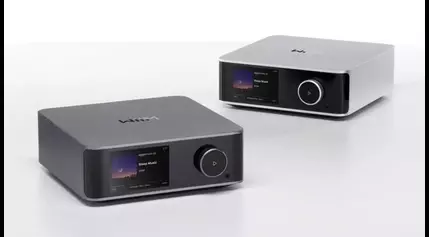News

Powering the Future: How the Electric Vehicle Ecosystem is Reshaping Home Energy
The rise of the electric car has captured the public's imagination, heralding a new era of sustainable personal transportation. However, the implications of this shift go far beyond the car itself, as the electric vehicle (EV) becomes the centerpiece of a comprehensive, environmentally-focused home energy ecosystem. In this in-depth exploration, we delve into the intricate web of interconnected technologies and innovations that are transforming the way we power our homes and lives.Unlocking the Potential of the EV-Powered Home
Integrating the Electric Car into Domestic Energy Systems
The electric car has the potential to become the hub of a decarbonized, energy-efficient home. Beyond serving as a mode of transportation, the EV can be integrated into a comprehensive home energy system that includes solar panels, domestic batteries, heat pumps, and other smart devices. This integration allows homeowners to optimize their energy usage, reduce their carbon footprint, and potentially even participate in grid balancing through vehicle-to-grid (V2G) technology.As the EV market has grown rapidly in recent years, the corresponding rise in the number of charger brands has been even more pronounced. However, this influx of new players has led to a "wild west" scenario, where safety and reliability can be compromised due to a lack of understanding of the complex factors involved in charger design and installation. Addressing this challenge is crucial to ensuring the seamless integration of EVs into the home energy ecosystem.Ensuring Safety and Reliability in Charger Design and Installation
To tackle the issues surrounding EV charger safety and reliability, companies like E.ON's TestingLab are stepping up to provide rigorous certification and training programs. These efforts aim to address the gaps in the current certification process, which is often more akin to corporate training than a comprehensive safety-focused assessment.By testing chargers from across Europe and pinpointing issues, the TestingLab has uncovered design flaws that could have led to dangerous overheating or charging failures. This knowledge is then shared with partners, including major automotive manufacturers, to improve charger safety and performance. Additionally, the TestingLab's training programs for installation engineers help to spread best practices and ensure that chargers are properly integrated into domestic electrical systems.Navigating the Regulatory Landscape of EV Chargers
The lack of EU-wide regulations regarding EV chargers has led to a patchwork of national requirements, further complicating the landscape. For example, the Netherlands mandates the use of non-conductive wooden backboards for charger installations. This diversity in regulations underscores the importance of robust testing and certification processes to ensure compliance and safety across different markets.By working closely with partners and training a network of certified installers, E.ON's TestingLab is helping to bridge the gap between the rapidly evolving EV charger market and the need for standardized, safe, and reliable domestic charging solutions.Optimizing Public Charging Infrastructure
The TestingLab's focus extends beyond the home, as it also puts public DC chargers through their paces. One of the key challenges in this realm is the risk of damage to charging devices, particularly for large vehicles like trucks, which can easily collide with the charging infrastructure due to their size and maneuverability. E.ON's solution is to employ an overhead gantry system, where the charging cable is suspended from above, keeping the device itself safely tucked away.Another concern for public charging is the ability of the grid to handle the peak demand. E.ON's approach to this problem involves incorporating battery storage into the charger itself, allowing the system to buffer peak loads and operate with a lower-capacity grid connection. This innovative design not only addresses the grid's capacity limitations but also serves as a model for the integration of energy storage into the public charging ecosystem.Digitizing the Charging Experience
As the electric vehicle ecosystem evolves, the importance of seamless digital integration cannot be overstated. Chargers that rely on wireless connections, such as Wi-Fi, can face connectivity issues if a homeowner changes their router, potentially disrupting smart charging schedules and the ability to take advantage of dynamic energy tariffs.To address this challenge, E.ON has focused on ensuring that chargers are properly networked, enabling energy suppliers to remotely manage charging schedules and even tap into the vehicle's battery to provide grid balancing services through V2G technology. This digital integration is a crucial component of the larger home energy ecosystem, allowing for optimization of energy usage, cost, and emissions.Embracing the Interconnected Home Energy Future
As the EV becomes increasingly embedded within the home energy ecosystem, the potential for integration and optimization grows exponentially. Homeowners can leverage solar panels, domestic batteries, and heat pumps to create a comprehensive, decarbonized system that prioritizes cost, emissions, or comfort based on their preferences.This interconnectivity also benefits energy suppliers, who can remotely manage heavy-load devices like heat pumps and EV chargers to maintain grid stability during periods of peak demand. The concept of vehicle-to-grid (V2G) technology, which allows the EV's battery to be used for grid balancing, further underscores the symbiotic relationship between the electric car and the broader energy infrastructure.The acquisition of smart grid intelligence company gridX by E.ON underscores the importance of integrated software solutions that can orchestrate this complex, interconnected home energy ecosystem. By enabling consumers to prioritize their preferences and allowing energy suppliers to optimize grid management, these advanced software platforms are paving the way for a future where the electric vehicle is the centerpiece of a truly sustainable, intelligent, and responsive home energy system.

